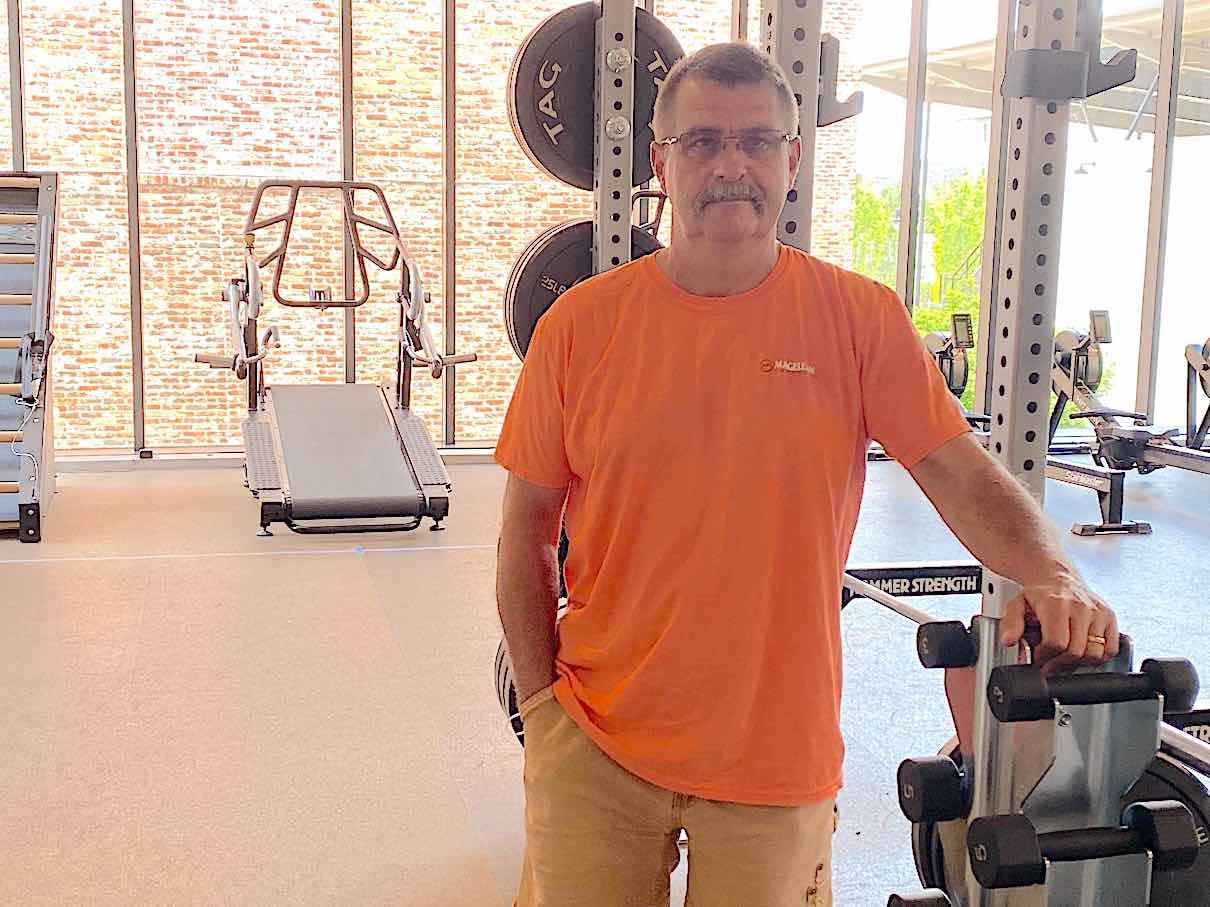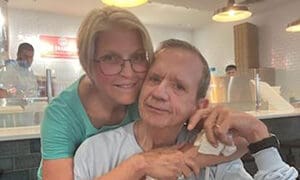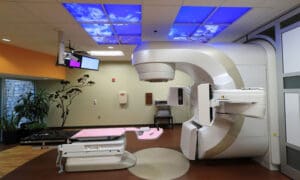Timothy Boggs woke up around 5 a.m. and realized he could not move the right side of his body and he couldn’t talk or yell out. His wife was not in bed and he knew he had to alert her to his predicament.
“I knew if I didn’t get out of bed I would die,” Boggs said. “I rolled out of bed, hit the night table on the way down and bruised myself like you wouldn’t believe.”
The noise alerted Boggs’ wife and son that there was something wrong. When they reached him, his speech was unintelligible, so they called 9-1-1 immediately and told them it was a suspected stroke. The paramedics arrived minutes later, heard Boggs attempt to answer their questions, and rushed him to Piedmont Fayette Hospital. The staff at the hospital was ready for Boggs at the door, got a scan of his brain, and administered tPA, a clot-busting drug that can help people having an ischemic stroke.
“Ideally, we hope to have a door to needle time of 30 minutes or less,” said Lisa Jackson, manager of Piedmont Fayette’s stroke program. “Every minute that a stroke goes untreated, 1.9 million brain cells are lost. Reducing our door to needle time can lead to better patient outcomes. For Mr. Boggs, our time to treatment was 19 minutes.”
The quick thinking of Bogg’s wife and the fast action of the paramedics and the staff at Piedmont Fayette resulted in an amazing recovery.
“The doctor told me later that with the blockage I had, I shouldn’t be walking or talking,” Boggs said. “They said it was a miracle. My faith in God has always been strong and I just feel blessed that everyone did the right thing and was in the right place at the right time.”
The key to optimal recovery of a stroke and decreasing disability is to B.E.F.A.S.T.:
- Balance – Is there trouble with balance or coordination?
- Eyes – Has the person experienced blurred, double, or loss of vision?
- Face – Look for an uneven smile
- Arm – Check if one arm is weak
- Speech – Listen for slurred speech
- Time – Call 911 right away
“Knowing the signs of a stroke and acting quickly can help lead to better outcomes,” said Ernesto Fernandez, M.D., a neurohospitalist at Piedmont Fayette.
Boggs has some recovery ahead of him and he is eager to get started. He hopes that everyone can learn the signs and symptoms of a stroke so that their chances for a positive outcome are better as well.
To learn more about strokes, visit piedmont.org/neurosciences.













Leave a Comment
You must be logged in to post a comment.